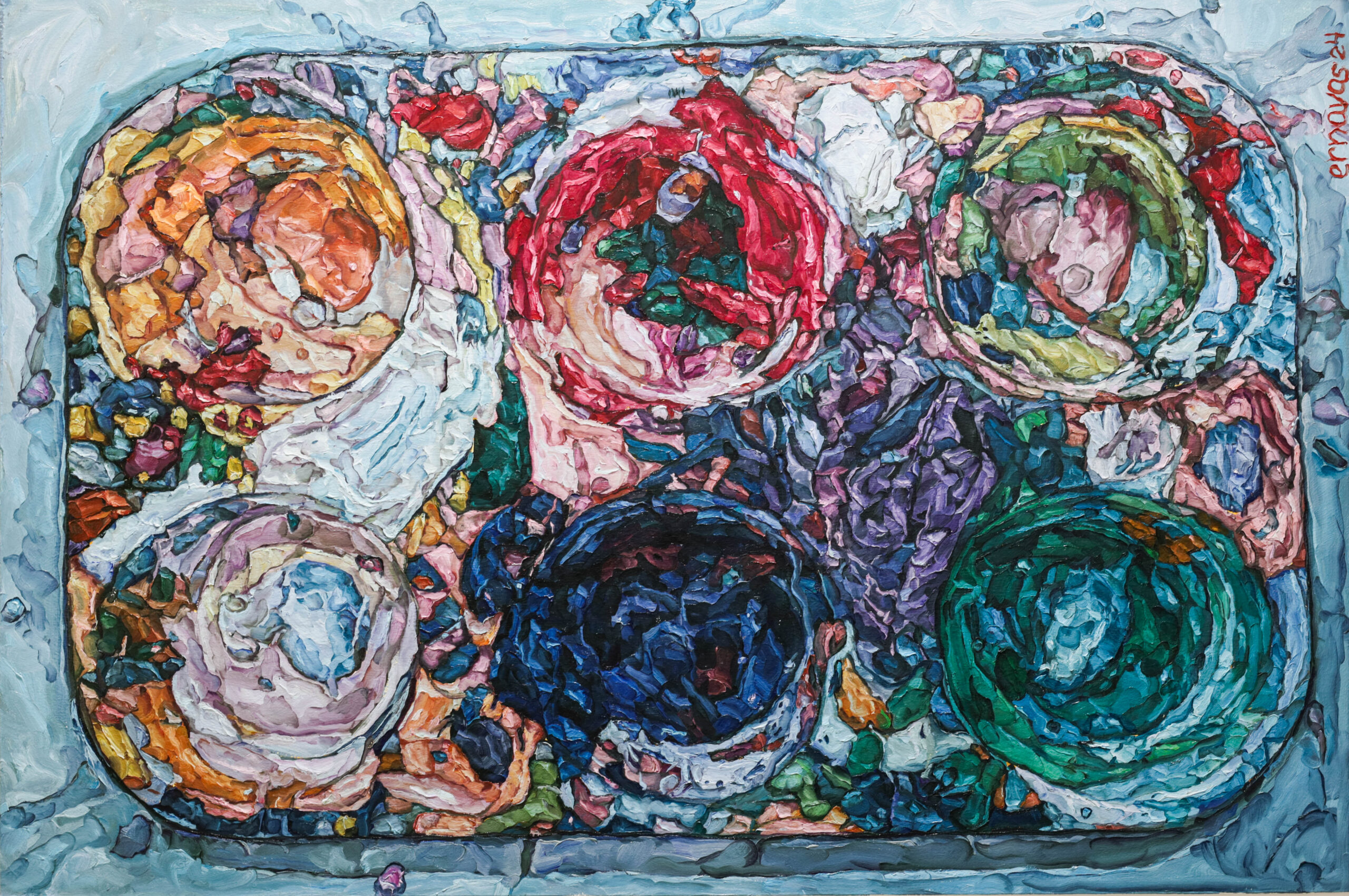There have been numerous accounts written by critics, curators, and artists themselves about the artist’s studio and the process of creation. Yet, few have paid attention to a seemingly insignificant object that plays an essential role in the act of painting—the artist’s palette. One notable exception is the critic Robert Hughes, who, when visiting Frank Auerbach’s cluttered and dismal studio in a cavern-like space in London, described it in vivid detail:
“The only color [in the room] is the paint itself—the canvas on the easel, and two palettes. The first of these is a slab, perhaps wood, perhaps stone, turgid with pigment inches thick. The second is an extraordinary object, the fossil of a wooden box upended…Warm colors are mixed on top of the box, cool ones on the shelf. Years of use have turned it into a block of pigment, its sides encrusted with glistening cakes and stalactites of the same magma that encrusts the floor.
Excerpt written by CLJ.
Download catalogue

